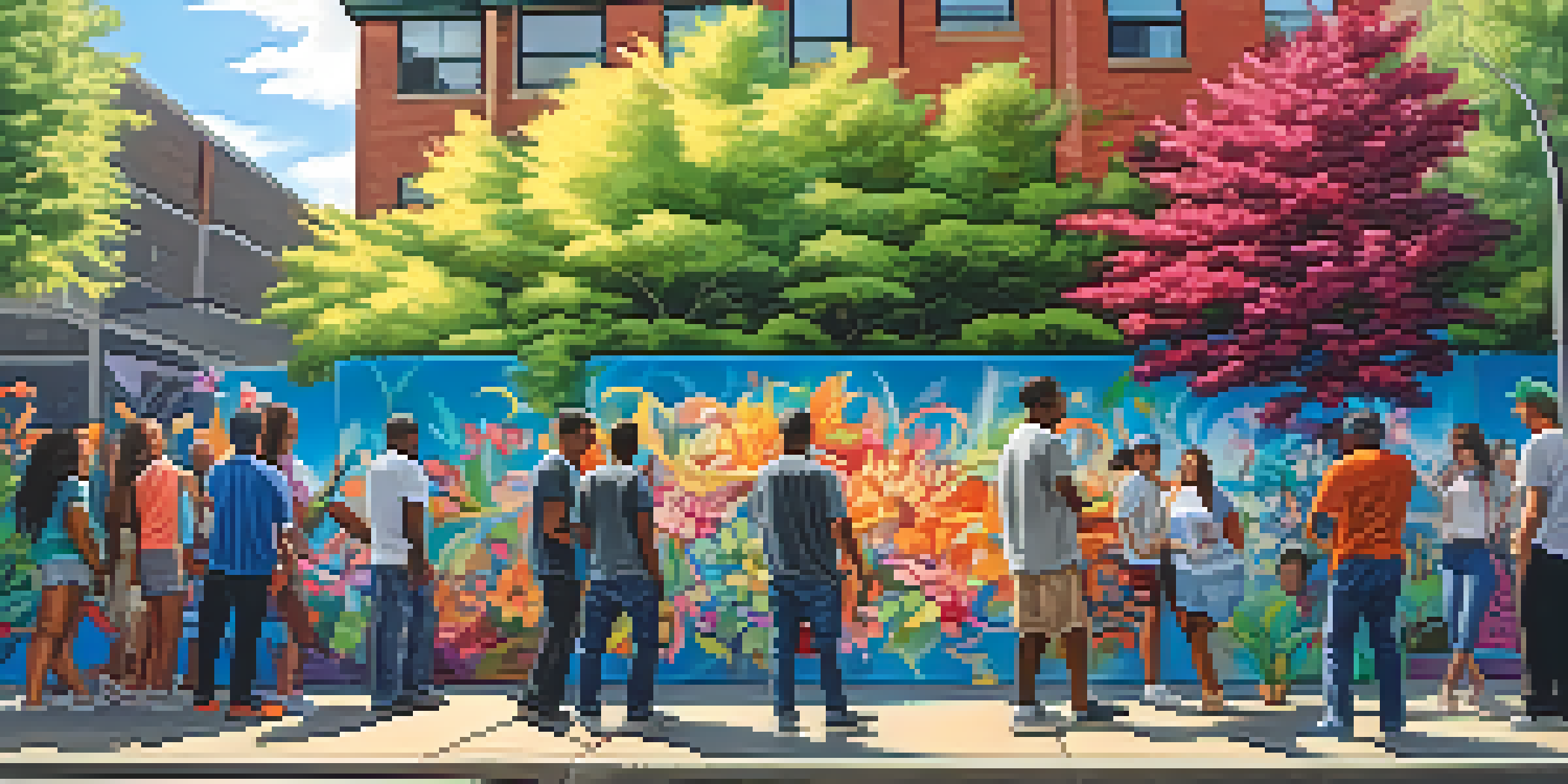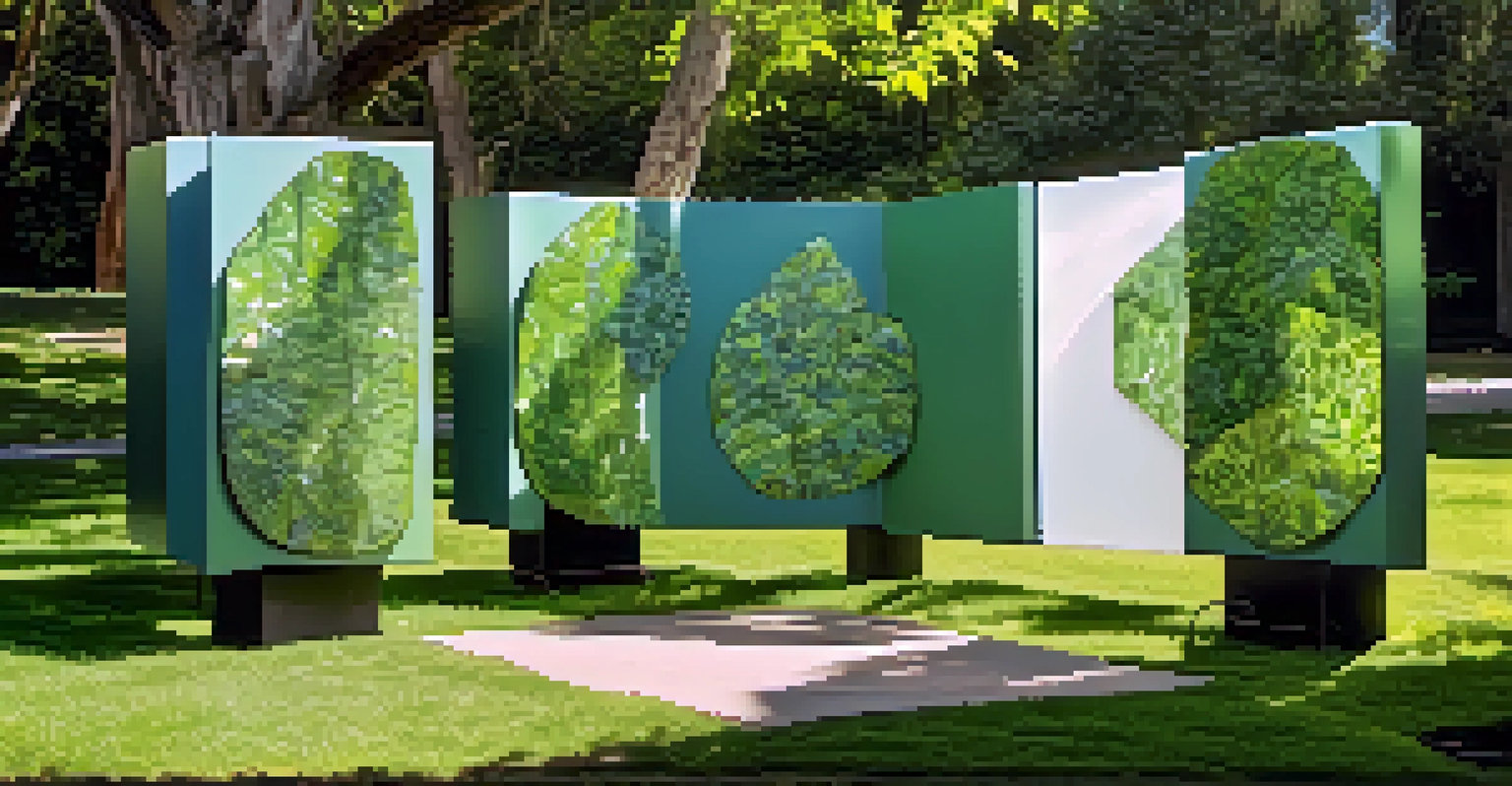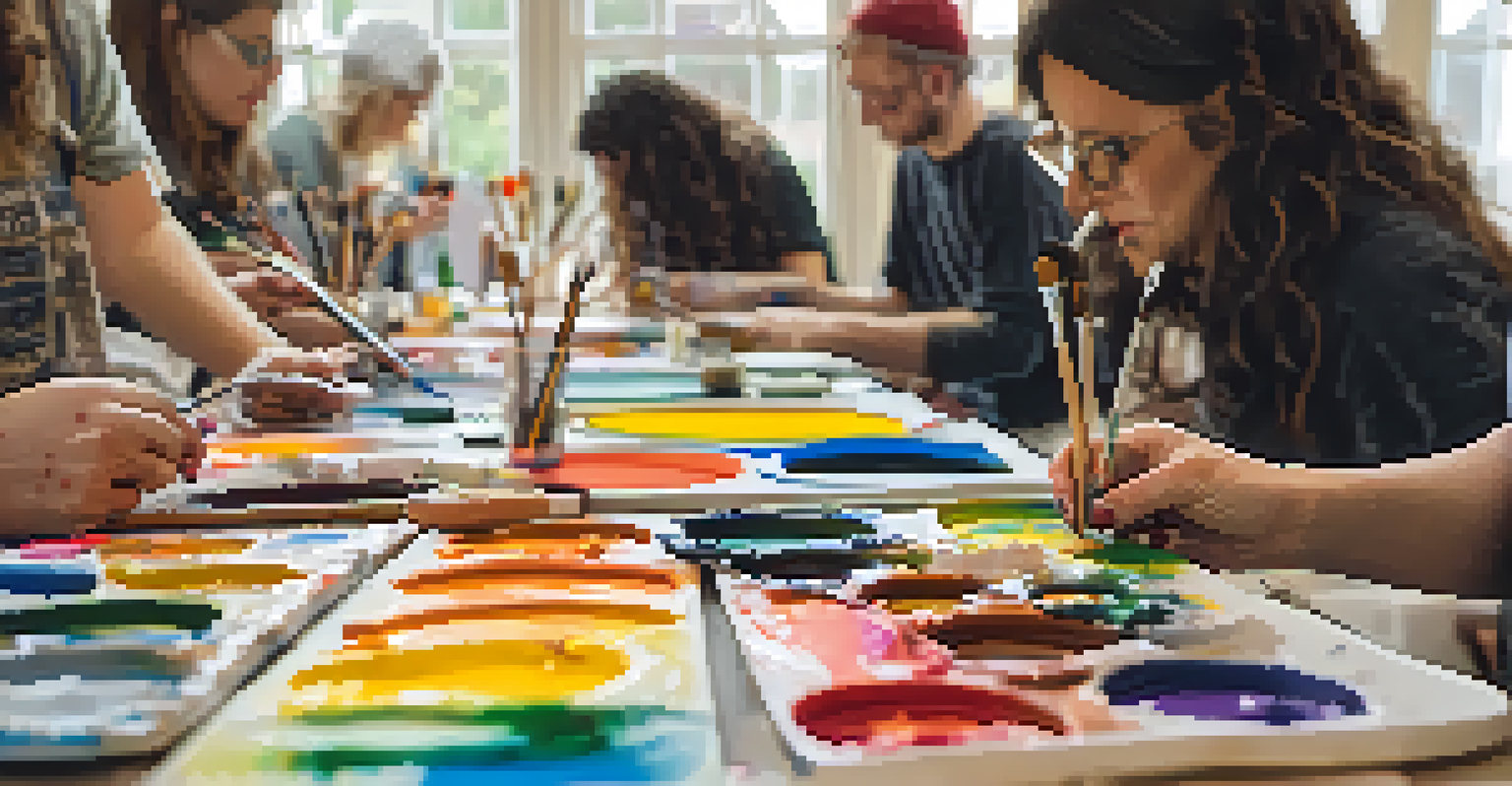Art in the Age of Social Media: A New Form of Activism

The Evolution of Art in the Digital Era
Art has always been a reflection of society, but the rise of social media has transformed how it is created and consumed. Artists now have a platform to share their work instantly, reaching audiences far beyond traditional galleries. This shift allows for a more diverse range of voices to emerge, giving visibility to marginalized communities. In this digital age, art is no longer confined to physical spaces but exists in a dynamic virtual landscape.
Art is not a mirror held up to reality, but a hammer with which to shape it.
Social media platforms like Instagram and TikTok have become virtual galleries, showcasing everything from paintings to performance art. Artists can engage with their followers in real-time, fostering a sense of community and dialogue around their work. This accessibility breaks down barriers, allowing anyone with an internet connection to engage with and create art. It’s a powerful change that democratizes artistic expression.
Moreover, the immediacy of social media allows for rapid responses to current events. Artists can create and share pieces that reflect the social and political climate almost instantaneously. This responsiveness can amplify urgent messages, making art a vital tool for activism and social change.
Social Media as a Catalyst for Activism
In today's world, social media isn’t just a platform for sharing selfies; it’s a battleground for social issues. Artists leverage these platforms to raise awareness about causes they care about, using their work to spark conversations and inspire action. This integration of art and activism creates a unique synergy, where creativity meets the urgency of social justice.

For example, campaigns like #BlackLivesMatter have seen artists contributing powerful visuals that resonate deeply with audiences. These artworks often go viral, spreading messages across the globe and mobilizing support for various movements. The ability to share impactful imagery quickly can make a significant difference in public perception and awareness.
Art and Activism Unite Online
The rise of social media has transformed art into a powerful tool for activism, enabling artists to reach wider audiences and engage in social issues.
Additionally, artists often collaborate with activists to create works that directly address specific issues. This partnership can result in compelling projects that enhance the visibility of social causes. By blending artistry with activism, they create a narrative that is hard to ignore, driving home the importance of the issues at hand.
The Role of User-Generated Content in Art Activism
User-generated content has revolutionized how art and activism intersect on social media. Everyday individuals can now contribute their artistic expressions to larger movements, enriching the dialogue surrounding various social issues. This grassroots participation not only empowers individuals but also fosters a sense of belonging within a community.
The role of the artist is to make the revolution irresistible.
When users share their artwork or personal stories related to a cause, it creates a mosaic of experiences and viewpoints. This collective effort can amplify the message, making it resonate more widely than traditional forms of activism. It’s a reminder that everyone has a voice, and every contribution matters.
Moreover, platforms often highlight trending hashtags or movements, giving additional visibility to user-generated content. This not only helps spread awareness but also encourages others to participate, creating a ripple effect that can lead to significant social change. The collaboration between artists and the public is a testament to the power of community-driven activism.
Challenges Faced by Artists in Activism
While social media offers incredible opportunities for artists, it also presents several challenges. The fast-paced nature of the digital world can lead to the commodification of art, where meaningful messages are diluted for the sake of virality. Artists may feel pressured to conform to trends rather than staying true to their authentic voices.
Additionally, the constant scrutiny of social media can be overwhelming. Artists who express political or social views may face backlash or even harassment, which can deter them from engaging in activism through their work. This fear of negative consequences can stifle creativity and limit the potential impact of their art.
User-Generated Content Empowers Voices
Everyday individuals can contribute their artistic expressions to movements, creating a rich tapestry of perspectives that amplify social causes.
Lastly, the sheer volume of content on social media means that important messages can easily get lost in the noise. Artists must find innovative ways to stand out while still conveying their messages authentically. This balancing act can be a daunting task, especially when the stakes are high.
Art as a Form of Healing and Resistance
Art has always been a means of expression, but in times of social upheaval, it can also serve as a form of healing. For many artists, creating work in response to societal issues allows them to process their emotions and experiences. This cathartic process not only aids the artist but can also resonate with audiences who share similar feelings.
Works of art that address trauma or injustice can prompt dialogue, encouraging viewers to confront uncomfortable truths. This engagement can be a healing experience for both the creator and the audience, providing a safe space to explore complex emotions. In this way, art becomes a collective act of resistance against oppression.
Furthermore, art can inspire hope and resilience. By showcasing beauty amidst chaos, artists remind us of the possibility of change and the strength of the human spirit. This hopeful perspective can galvanize communities, motivating them to unite and advocate for a better future.
The Future of Art and Activism in a Digital World
As technology continues to evolve, the relationship between art and activism is likely to grow even stronger. Artists are already experimenting with new mediums, such as virtual reality and augmented reality, to create immersive experiences that engage audiences in innovative ways. These advancements could reshape how we perceive and interact with art and social issues.
Additionally, as more people become aware of the power of art in activism, we may see an increase in collaborative projects that bridge gaps between artists, activists, and communities. This teamwork can amplify messages and create impactful movements that resonate on a global scale. The future holds endless possibilities for creative expression as a means of advocacy.
Challenges Artists Face Today
Despite the opportunities social media provides, artists encounter challenges like commodification and backlash that can hinder their activism.
Ultimately, the intersection of art and activism in the age of social media is a dynamic landscape. By harnessing the power of digital platforms, artists can continue to inspire change and challenge the status quo. This ongoing dialogue will not only shape the future of art but also the future of society as a whole.
Conclusion: The Power of Art in Social Movements
In conclusion, art in the age of social media has emerged as a formidable force for activism. It allows artists to express their views and connect with audiences on a personal level, fostering a sense of community and shared purpose. The ability to share art instantly and widely has transformed how social movements gain momentum and visibility.
As we navigate this digital landscape, it’s crucial to recognize the importance of supporting artists who use their work for social good. By engaging with and amplifying their messages, we can contribute to a culture that values creativity and advocacy. This support can empower artists to continue pushing boundaries and inspiring change.

Ultimately, art is a powerful tool that can challenge perceptions, spark conversations, and drive action. In the hands of passionate creators, it has the potential to transform society, making the world a more just and beautiful place for everyone.